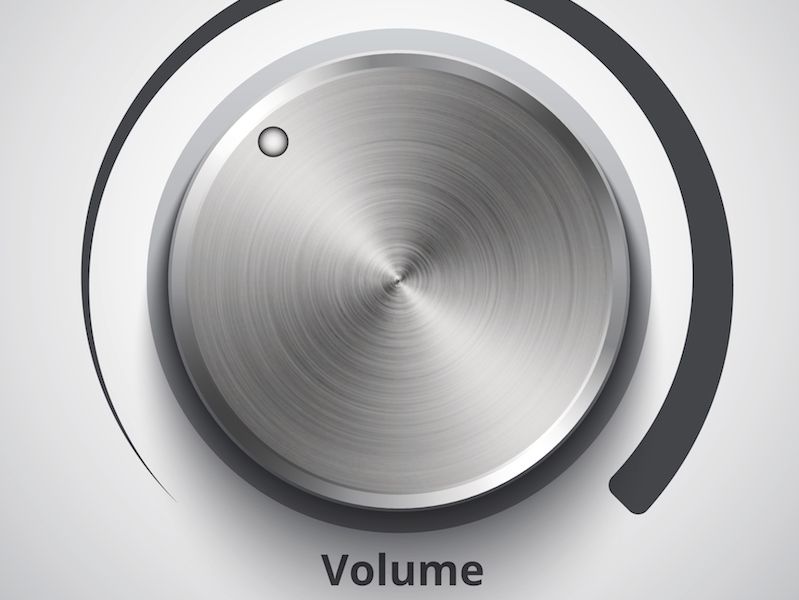
Have you ever noticed the “Beware of Sharks” sign when you’re at the ocean? It’s not hard to understand that you shouldn’t ignore a caution like that. You may even reconsider swimming at all with a sign like that (if the sign is written in big red letters that’s especially true). But people usually don’t pay attention to cautions about their hearing in the same way for some reason.
Recent research has found that millions of people neglect warning signs regarding their hearing (these studies specifically looked at populations in the UK, but there’s little doubt the problem is more global than that). Awareness is a huge part of the issue. It’s pretty instinctive to be scared of sharks. But being frightened of loud noise? And the real question is, what volume level is too loud?
Loud And Dangerous Sound is All Around us
Your ears are not just in peril at a live concert or construction site (although both of those situations are, indeed, dangerous to your hearing). Many every-day sounds can be hazardous. That’s because it isn’t only the volume of a sound that presents a danger; it’s also how long you’re exposed. Your hearing can be damaged with even low level noises like dense city traffic if you’re exposed to it for more than two hours at a time.
Generally, here’s a rough outline of when loud becomes too loud:
- 30 dB: Normal conversation would be at this volume level. At this level, there won’t be a limit to how long you can confidently be exposed.
- 80 – 85 dB: An air conditioner, dense traffic, and a lawnmower are at this volume. After around two hours this level of sound becomes harmful.
- 90 – 95 dB: Think of how loud a motorcycle is. This level of exposure becomes dangerous in as little as 50 minutes of exposure.
- 100 dB: An approaching subway train or a mid-sized sporting event are at this sound level (depending on the city, of course). This level of sound can become dangerous after 15 minutes of exposure.
- 110 dB: Do you ever crank the volume on your earpods up to max? On most smartphones, that’s about this level. 5 minutes will be enough to be harmful at this volume.
- 120 dB and over: Immediate pain and damage can occur at or above this level (consider an arena sized sports event or rock show).
How Loud is 85 dB?
Broadly speaking, you should look at anything 85 dB or louder as putting your hearing in danger. The problem is that it’s not always clear just how loud 85 dB is. A shark is a tangible thing but sound isn’t so tangible.
And that’s one of the reasons why hearing cautions commonly go neglected, specifically when the sound environment isn’t loud enough to cause pain. There are a couple of possible solutions to this:
- Sufficient signage and training: This refers to workspaces, in particular. The real hazards of hearing loss can be reinforced by signage and training (and the advantages of protecting your hearing). In addition, just how noisy your workplace is, can be made clear by signage. Training can tell employees when hearing protection is required or suggested.
- Get an app: Your hearing can’t be directly safeguarded with an app. But there are several free apps that can function as sound level monitors. It’s difficult to assess what 85 dB feels like so your ears can be injured without you even realizing it. Making use of this app to keep track of noise levels, then, is the solution. This can help you develop a sense for when you’re going into the “danger zone” (Or, the app will simply alert you to when things get too noisy).
When in Doubt: Protect
No app and no signage will ever be perfect. So if you’re in doubt, take the time to safeguard your ears. Noise damage, over a long enough period of time, can bring about hearing loss. And these days, it’s never been easier to damage your ears (it’s a simple matter of listening to your tunes too loudly).
If you’re listening to headphones all day, you should not turn up the volume past the mid-mark. If you keep cranking it up to hear your music over background noise you should find different headphones that have noise cancellation.
So when volume becomes too loud, it’s important to accept it. And to do this, you need to increase your own recognition and knowledge level. Safeguarding your ears, wearing ear protection, or limiting your exposure, is easy enough. But you have to know when to do it.
These days that should also be easier. Especially now that you know what to be aware of.
Think you might have hearing loss? Schedule a test.